Regulating Mitochondrial Replacement Therapy (MRT) or the Three-Parent IVF Technique in Singapore
Published in General & Internal Medicine and Pharmacy & Pharmacology
Please refer to the following scientific journal article:
Please also listen to the audio podcast:
Introduction
The ethical challenges and policy implications of extending Mitochondrial Replacement Therapy (MRT) beyond its current intended use—preventing the transmission of pathological mitochondrial DNA (mtDNA) mutations—to treating age-related female infertility by enhancing oocyte quality in older women, are critically examined. This application is often referred to as ooplasmic donation or ooplasmic transfer.
Background and Rationale for Extending the Application of MRT to Treating Age-Related Female Infertility
A recent scientific breakthrough achieved the birth of eight healthy human offspring through MRT using pronuclear transfer (PNT) aimed at preventing mitochondrial diseases. These encouraging preliminary results regarding the safety of MRT, based on early neonatal findings and ongoing follow-ups, suggest the possibility of its wider application. Although the long-term safety of MRT remains unvalidated, the initial findings open the door to addressing age-related female infertility.
The demand for extending MRT is rooted in current sociocultural dynamics in many developed countries, where highly educated women are increasingly delaying marriage and childbearing. Because female fertility declines sharply with age, a significant fraction of older female in vitro fertilization (IVF) patients fail to conceive with their own oocytes. For these women, utilizing MRT to rectify age-related decline in oocyte quality, thereby enabling them to conceive genetically related offspring, is considered a much more preferable option than conventional egg donation, which disrupts the continuity of the maternal genetic lineage. Mitochondria play a central role in providing energy for fertilization and embryonic development, and because mitochondria deteriorate with age, replacing them with healthy donor mitochondria may help restore oocyte competence.
Ethical Justifications for Permitting MRT for Treating Age-Related female infertility
Several compelling arguments support the desire of older women with poor-quality eggs to use MRT to have genetically related children:
- Reproductive Autonomy and Genetic Affinity: The choice to pursue a "genetic child" via MRT is viewed as an exercise of personal reproductive autonomy. The interest in genetic affinity underpins a procreative right, including the right to have children to whom one is genetically related. Respecting this choice aligns with the principle of respect for persons, mirroring the motivations behind the introduction of IVF. However, autonomy must be balanced against non-maleficence if the procedure poses high risks or uncertain long-term effects on the offspring.
- Sociocultural Significance of Lineage: The "ordinariness" of parents and children being bound by ties of blood carries deep sociocultural significance. Permitting MRT fulfills the "natural innate human desire and impulse" to beget genetically related offspring, which alternatives like adoption or egg donation cannot fulfill. The ability for a child to maintain an unbroken maternal lineage holds significant personal value for many individuals. Furthermore, genetics is considered a key part of personal identity and self. Shared genetic traits and resemblances are believed to forge an emotional bond, and many parents desire children who are the physical manifestation of their emotional union. The failure to beget a genetically related child is often perceived as a greater loss than having a child with different traits than expected.
- Justice and Access: Advocates argue that it would be unjust to deny older infertile women access to MRT, similar to how infertile couples have access to conventional IVF treatment. The World Health Organization (WHO) recognizes infertility as a disability, providing support under international human rights frameworks for the right to start a family with genetic ties. Critics, however, dispute the analogy, noting that MRT addresses a natural part of reproductive aging rather than a pathology, and carries greater risks than IVF.
- Cultural and Religious Considerations: For some religious or ethnic communities, there is a powerful cultural imperative or religious worldview that emphasizes genetic continuity and biological lineage, often associated with social stigma toward adopted children. For ethnic minority groups, preserving the bloodline can be a means of retaining a rare genetic heritage and avoiding cultural assimilation.
Medical and Ethical Caveats
The personal desires of infertile older women must be balanced against the unknown long-term medical risks and potential detrimental effects of MRT.
- Aneuploidy and Medical Efficacy: A major limitation is that ooplasmic donation does not overcome the core biological problem of chromosomal aberrations (aneuploidy) prevalent in the eggs of older women. A pilot study utilizing maternal spindle transfer for repeated IVF failures reported a high aneuploidy rate (54.8%) in MRT blastocysts, suggesting that claims concerning MRT efficacy for idiopathic infertility treatment may be premature.
- Risks to Offspring and Future Generations: MRT carries greater risks and uncertainties than IVF. There are concerns about adverse interactions due to a mismatch between nuclear and mitochondrial DNA, and possible harmful epigenetic changes. Given the high uncertainty and potential for long-term, trans-generational harm, many critics argue that the interests and welfare of offspring and descendants must ethically outweigh parental autonomy and wishes.
- Offspring Identity and Kinship: Offspring conceived via MRT inherit genetic material from three individuals - nuclear DNA from the mother and father, and mitochondrial DNA from the egg donor. This raises concerns about the child's self-conception, identity, ancestry, kinship, and the potential for "genealogical bewilderment". Although the donor’s mtDNA contributes less than 0.1% of the total genetic material, the question of whether this fundamentally alters the offspring’s genetic lineage is dependent on individual perception. Regulatory bodies currently differ on donor identification: the UK maintains donor anonymity for mitochondrial donors, while Australia mandates donor identification under Maeve’s Law.
- Religious Objections: Certain religious frameworks object to MRT. Conservative Christians often object to pronuclear transfer (PNT) because it involves the destruction and manipulation of human embryos, which they view as violating the sanctity of life. Islamic bioethics generally opposes third-party mitochondrial donation as it risks muddling and confusing the offspring's lineage, which would violate Shariah injunctions to protect one's family lineage (Hifz al-Nasl).
Ethical Challenges in Altering the Market Dynamics of Commercialized Egg Donation
The widespread application of MRT would escalate the demand for donor eggs. MRT is anticipated to be significantly more expensive than conventional IVF, potentially limiting accessibility to the affluent. Extending MRT to older women alters the egg donation market dynamics in jurisdictions that permit commercialized egg donation. First, MRT might reduce the psychological barriers associated with egg donation for both donors and recipients, as less than 0.1% of the donor’s DNA is inherited. Second, unlike conventional egg donation, the personal attributes of the donor (race, education, height) are not a primary concern for the recipient patient in MRT, since these are not influenced by the mitochondrial genome. This broadens the donor pool to potentially include women from lower educational and poorer socioeconomic backgrounds, as well as disadvantaged ethnic minorities. However, this expansion raises concerns about potential exploitation and informed consent, particularly if wealthier countries source egg donors from poorer countries, fostering practices akin to "reproductive colonialism" or "fertility colonialism".
Ethical Challenges in Procuring Unused Surplus Frozen Eggs from Former Elective Egg Freezing (EEF) Patients for MRT
The procurement of unused surplus frozen eggs from former elective egg freezing patients for use in Mitochondrial Replacement Therapy (MRT) presents several specific ethical challenges, even though utilizing these eggs is seen as a promising source of donation:
- Exploitation of Emotional Vulnerability and Financial Loss:
◦ Former elective egg freezing patients often experience significant psychological stress, emotional turmoil, and dilemmas when deciding the disposition of their unused frozen eggs.
◦ Offering refunds or reimbursements in exchange for donation at this sensitive juncture may exploit the patient's vulnerable emotional state and their desire to recoup financial losses.
◦ This financial inducement risks trespassing on the prospective donor's autonomous decision-making process, potentially encouraging a hasty decision that could later lead to regret.
◦ Although compensating these former patients is sometimes argued to be an ethically justifiable refund (rather than undue financial inducement, since they already spent the money), the timing of the offer relative to their emotional state remains a concern.
2. Conflict of Interest and Abuse of Fiduciary Relationship:
◦ Fertility clinics and medical professionals may have "hidden agendas" and conflicts of interest when actively soliciting these unused frozen eggs.
◦ The clinics stand to earn additional medical fees by performing the expensive MRT procedure on recipient patients.
◦ Fertility doctors may leverage the trust and rapport built with their former patients to persuade them to donate, which risks abusing the doctor-patient fiduciary relationship.
3. Concerns regarding Ooplasm Quality and Patient Information:
◦ While not strictly an ethical challenge concerning procurement practices, a related concern is that these donated eggs may not be an ideal source for improving oocyte quality.
◦ Elective egg freezing patients are typically significantly older than conventional egg donors when their eggs are frozen, which may translate to lower ooplasm quality.
◦ The unknown effect of the freeze–thaw process on ooplasm quality for the MRT procedure is also a consideration.
◦ Ethically, prospective recipient patients must be fully informed of the limitations and deficiencies of using donated unused frozen eggs before proceeding with MRT.
Ethical Challenges with Procuring IVG Derived Eggs for MRT
While In Vitro Gametogenesis (IVG)-derived oocytes are viewed as a potentially morally preferable solution to mitigate ethical issues associated with conventional egg donation (like exploitation and compensation), the use of surplus IVG-derived oocytes for Mitochondrial Replacement Therapy (MRT) still raises its own specific legal and ethical challenges.
The primary ethical challenges related to the procurement of IVG-derived eggs for MRT are as follows:
- Informed Consent and Continuous Production: There is a risk that once the expensive IVG process is initiated for a fee-paying patient, the production cycle might be kept running continuously to generate surplus eggs for mitochondrial donation without the patient's knowledge and consent. This potential for unauthorized use requires a rigorous vetting process to ensure informed consent and stringent audits of laboratories handling the IVG procedure.
- Donor Compensation and Financial Inducement: A question arises regarding whether IVG donors should be fairly compensated or reimbursed for their donation, especially since they would have incurred a substantial expense for the initial procedure. While compensating these patients with a partial refund is argued to be less ethically problematic than undue financial inducement in commercialized egg donation (as they are recouping money already spent), the ethical guidelines regarding this reimbursement still need to be established.
- Reduction of Mitochondrial Genome Diversity: There are lingering concerns that widespread ooplasm donation derived from a relatively small pool of IVG patient donors could potentially lead to a reduction of human mitochondrial genome diversity within the population. Although the level of mitochondrial DNA (mtDNA) diversity is naturally low, caution must be exercised, and one possible safeguard is to cap the number of donations originating from a single ooplasm donor.
Policy Recommendations and Future Directions
To navigate these challenges, several policy recommendations are thus proposed:
- Clinical Trials: MRT applications must be conducted within clinical trials until the long-term safety of this technology is definitively and rigorously validated. Health issues were already observed in some offspring of the UK study (e.g., brief startles,hyperlipidemia, cardiac arrhythmia), emphasizing the need for ongoing monitoring.
- Rigorous Patient Counseling: Mandatory, in-depth patient counseling is imperative to ensure informed consent. Patients must be explicitly informed about the unknown long-term safety risks, the significantly lower success rates of MRT compared to conventional egg donation, and that the procedure does not solve the core issue of increased aneuploidy risks in older women. Counseling must also address the potential psycho-social impact on the offspring regarding identity and kinship.
- Stringent Regulation of Donor Egg Procurement: Regulatory authorities should impose stringent oversight on egg procurement, ensuring that donors, especially those from newly expanded, vulnerable populations, receive fair compensation and adequate medical follow-up. Conflict of interest issues, such as fertility clinics soliciting unused frozen eggs from former elective egg freezing patients (where reimbursement could exploit emotional vulnerability), must also be resolved.
- International Framework: An internationally recognized ethical and regulatory framework is needed to govern MRT to prevent the exploitation of legal loopholes arising from varying regulatory frameworks across countries.
Conclusion
In conclusion, Mitochondrial Replacement Therapy (MRT) presents a promising avenue for addressing the global rise in age-related infertility, largely driven by the sociocultural trend of highly educated women delaying marriage and motherhood. The initial, encouraging safety results from MRT procedures aimed at preventing mitochondrial diseases have opened the possibility for its broader application in enhancing oocyte quality for older women seeking genetically related offspring. However, extending MRT to treat age-related female infertility—cases not involving mitochondrial disease—is fraught with unresolved ethical challenges that require rigorous debate and regulation. A central difficulty is balancing the deeply held reproductive aspirations and autonomy of infertile older women with the unknown long-term medical risks and ethical concerns posed by the procedure to the offspring and future generations. Critics argue that the potential for long-term, trans-generational harm ethically outweighs parental desires. The anticipated widespread application of MRT is expected to significantly escalate the demand for scarce donor eggs, potentially leading to unethical procurement practices that could exploit women from poorer socioeconomic backgrounds. To address this challenge, parallel research into In Vitro Gametogenesis (IVG) is being explored as a potentially more ethically acceptable and scalable solution to mitigate concerns about donor egg scarcity.
Follow the Topic
-
Journal of Assisted Reproduction and Genetics

This journal publishes cellular, molecular, genetic, and epigenetic discoveries advancing our understanding of the biology and underlying mechanisms from gametogenesis to offspring health.
Related Collections
With Collections, you can get published faster and increase your visibility.
Outcomes in ARTs
Publishing Model: Hybrid
Deadline: Ongoing
Unlocking the potential of artificial intelligence (AI) in reproductive medicine: The JARG collection on assisted reproductive technology (ART) and machine learning
This collection of papers brings together the latest, cutting-edge research and delves into the promising role of Artificial Intelligence (AI) in shaping the future of reproductive medicine. With an aim to inspire and ignite innovation, this collection invites authors to contribute their own original and cutting-edge research, while providing readers with an exciting array of advancements in this rapidly evolving field.
Artificial intelligence surrounds us in daily living. But in an indirect, non-clinical and arm’s length way. And as such a devil-may-care attitude abides. If it works, who cares about details? (Most of us can't tell the difference between Python, Java, or C++ and frankly don’t care). It’s simply not part of the daily to-and-fro of delivering assisted reproductive technologies (ART). But evidence is mounting that AI can provide additional horsepower to the engine of decision making in ART. And this migration of AI into the front yard of clinical care should prompt us all to sit up, pay attention and take notes. Like it or not, AI has arrived on the ART scene. New AI tools are rapidly emerging in ART but without an easy-to-read user’s manual. As with all things new and novel, education is the foundation to make smart and well-informed decisions and avoid making premature grab-and-go choices in response to a hot topic pitch that we may live to regret.
As highlighted in this collection, the potential of AI in the reproductive space is spectacular, enabling more accurate predictions of pregnancy outcomes, optimized embryo selection, and personalized treatment plans based on individual characteristics and genetic profiles. Harnessing the power of AI, reproductive medicine is undergoing a paradigm shift, redefining the boundaries of what is possible. Machine learning algorithms have paved the way for improved diagnosis, treatment, and patient care. By leveraging vast amounts of data, AI systems can identify patterns, make predictions, and provide tailored recommendations to healthcare providers and patients.
However, as always, progress also comes with perils. Our field is ripe with examples of the principle “implementation before validation” where the enthusiasm for the utilization of new technologies exceeds the appreciation for potential pitfalls and risks. This phenomenon appears to be almost inevitable in the case of artificial intelligence (AI) assisted reproductive technology (ART). There is no longer any doubt regarding the integral role that AI will play in ART. While the “if” question regarding implementation is answered, we can still control the “how.” Are we outsourcing clinical care to a computer? How do AI tools impact the quintessentially clinical process that, until now, was solely within the purview of providers? Solid, high-quality prospective studies are needed to demonstrate improved outcomes and ideally, cost reduction. The crossroad between biology and informatics needs to be traversed by academics and experienced clinicians, as well as statistical experts, and guarded by solid peer review, rather than occupied entirely by commercial interests. Data integrity and safety are paramount. Furthermore, the care of our patients should continue to be holistic, empathetic, and not de-humanized. AI should not just provide fancy gadgets for to the privileged few, but advantages to the reproductive patient collective as a whole.
This collection showcases a wide range of papers that investigate the profound impact of AI on fertility-related topics, including assisted reproductive technologies, reproductive health monitoring, predictive modeling, and personalized medicine. By featuring a diverse range of interdisciplinary research, this collection serves as a platform for scientists, clinicians, and engineers to share their insights, innovations, and future visions. Through collaboration and knowledge exchange, we aspire to accelerate the progress of AI in reproductive medicine, ultimately improving outcomes for people struggling with infertility and reproductive health challenges.
Join us in this stimulating journey through the cutting-edge science of AI and fertility. Explore the remarkable breakthroughs, be inspired by the endless possibilities, and contribute your own original research to shape the future of reproductive medicine. Together, we can push the boundaries of science, technology, and human potential to revolutionize the field of fertility and bring hope to millions around the world. Read on and make your own decisions about how these new tools can positively impact what we do as individual practices and as a specialty. As we enter this new era, in awe of the rapid breakthroughs occurring in front of our eyes, we continue to remind ourselves of the ultimate goal of our work: healthy babies.
Publishing Model: Hybrid
Deadline: Ongoing
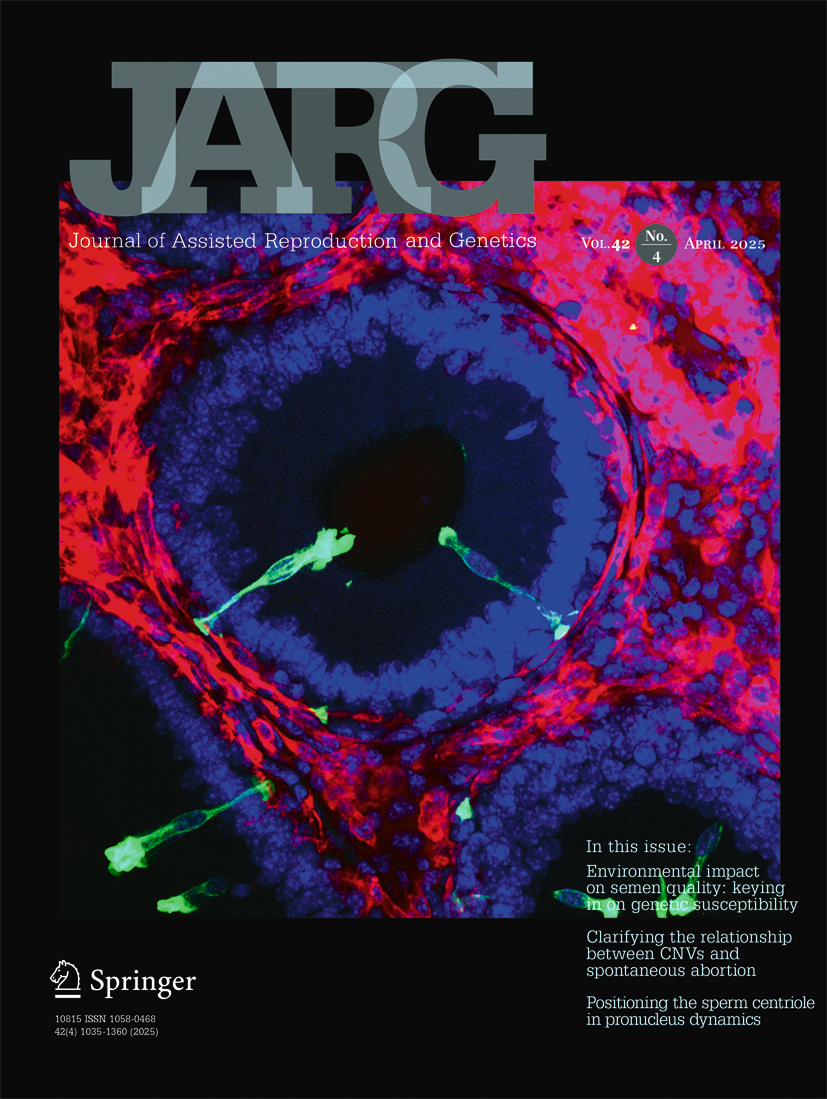
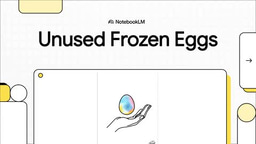
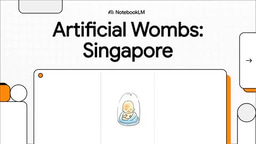
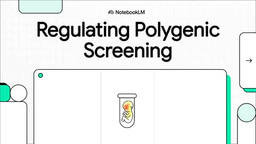
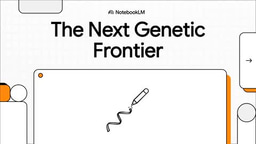

Please sign in or register for FREE
If you are a registered user on Research Communities by Springer Nature, please sign in